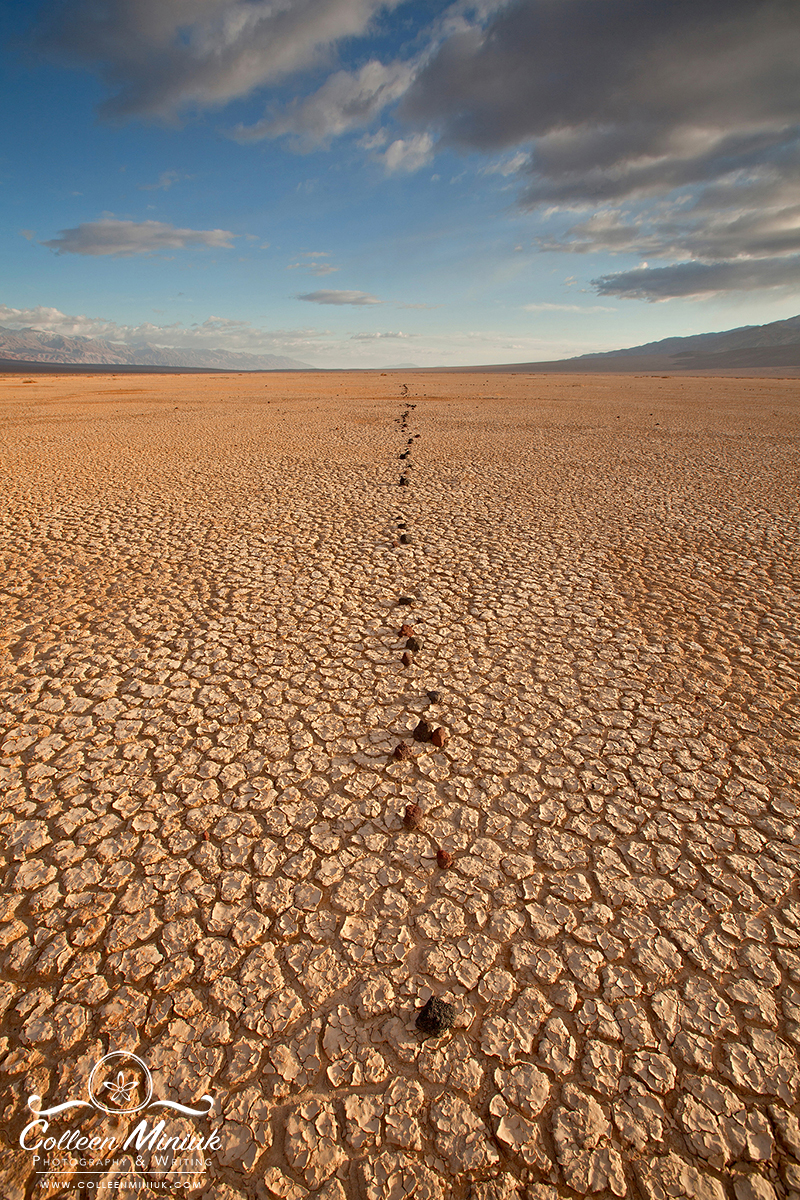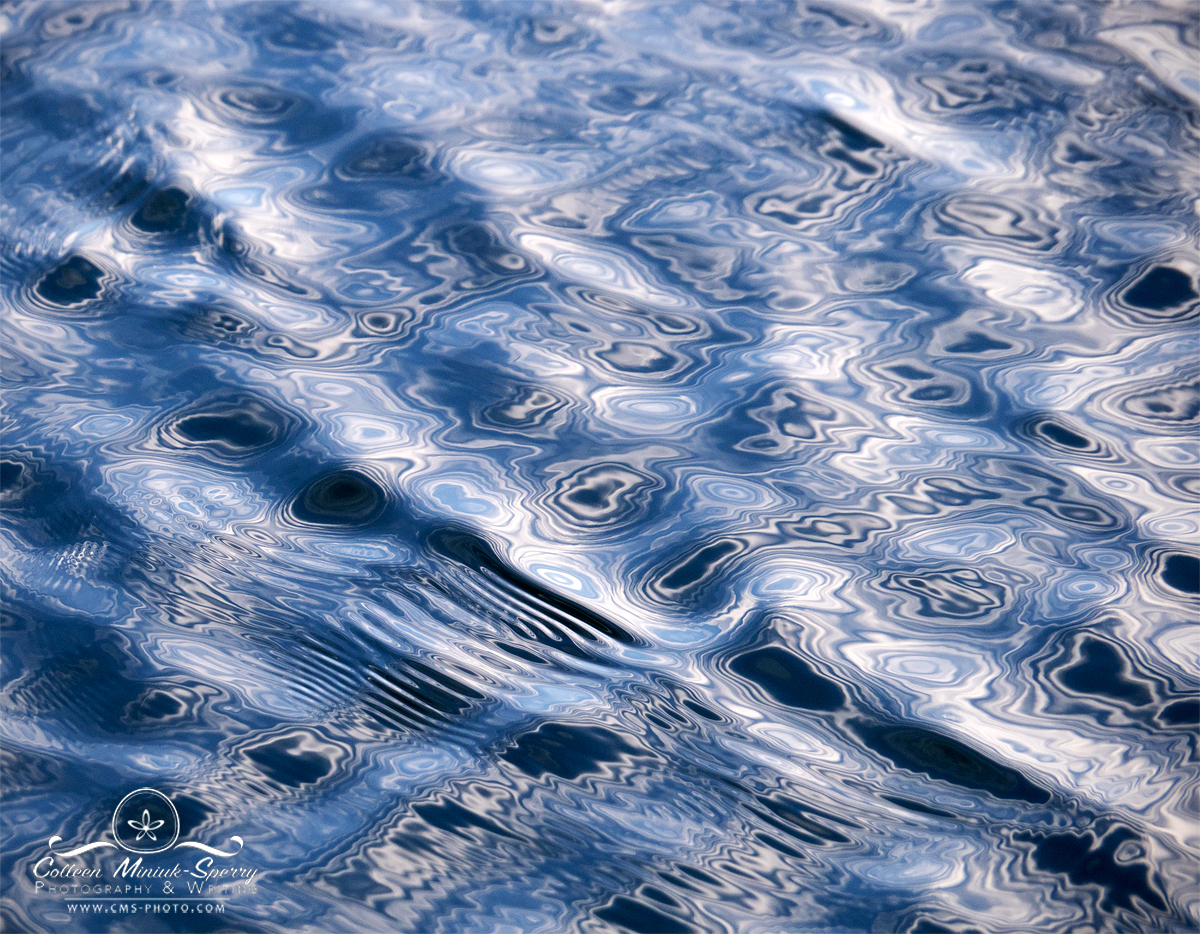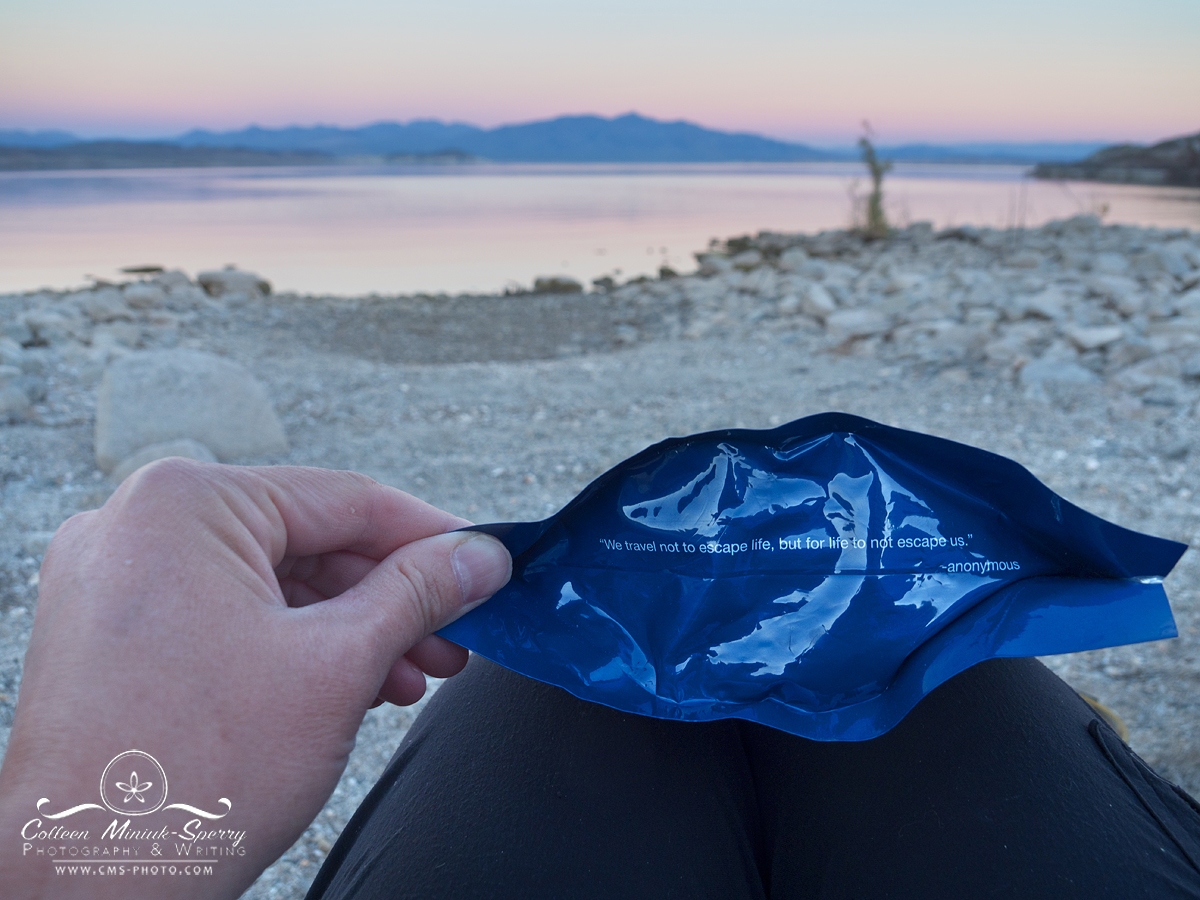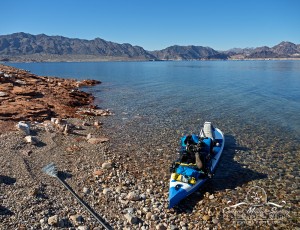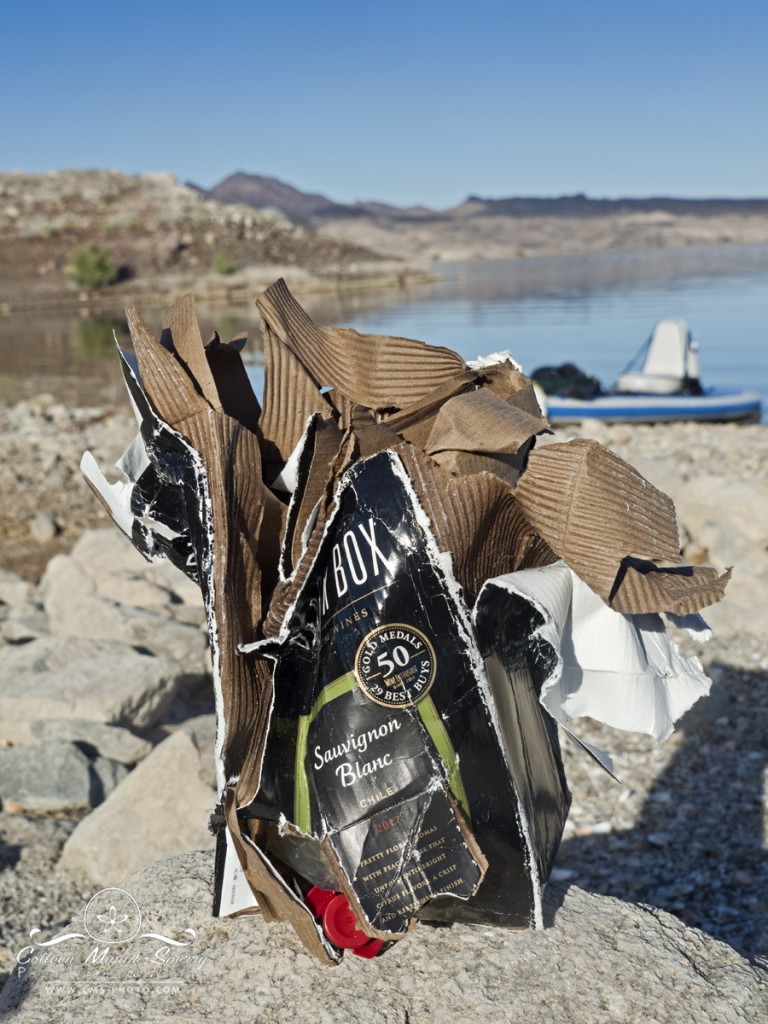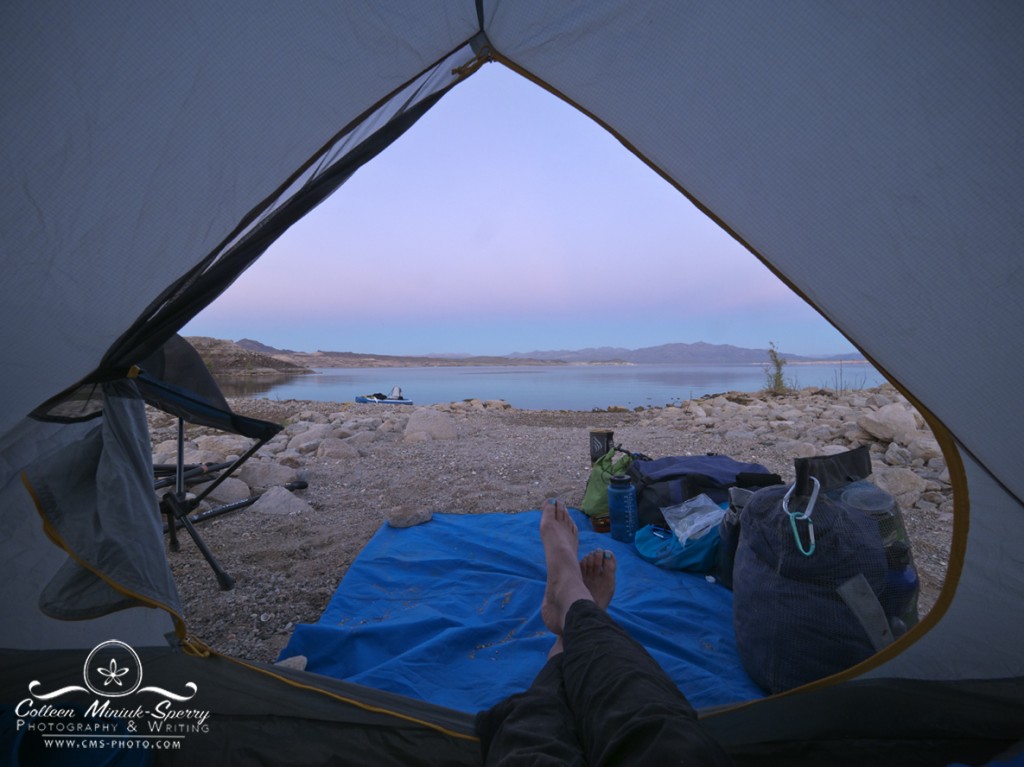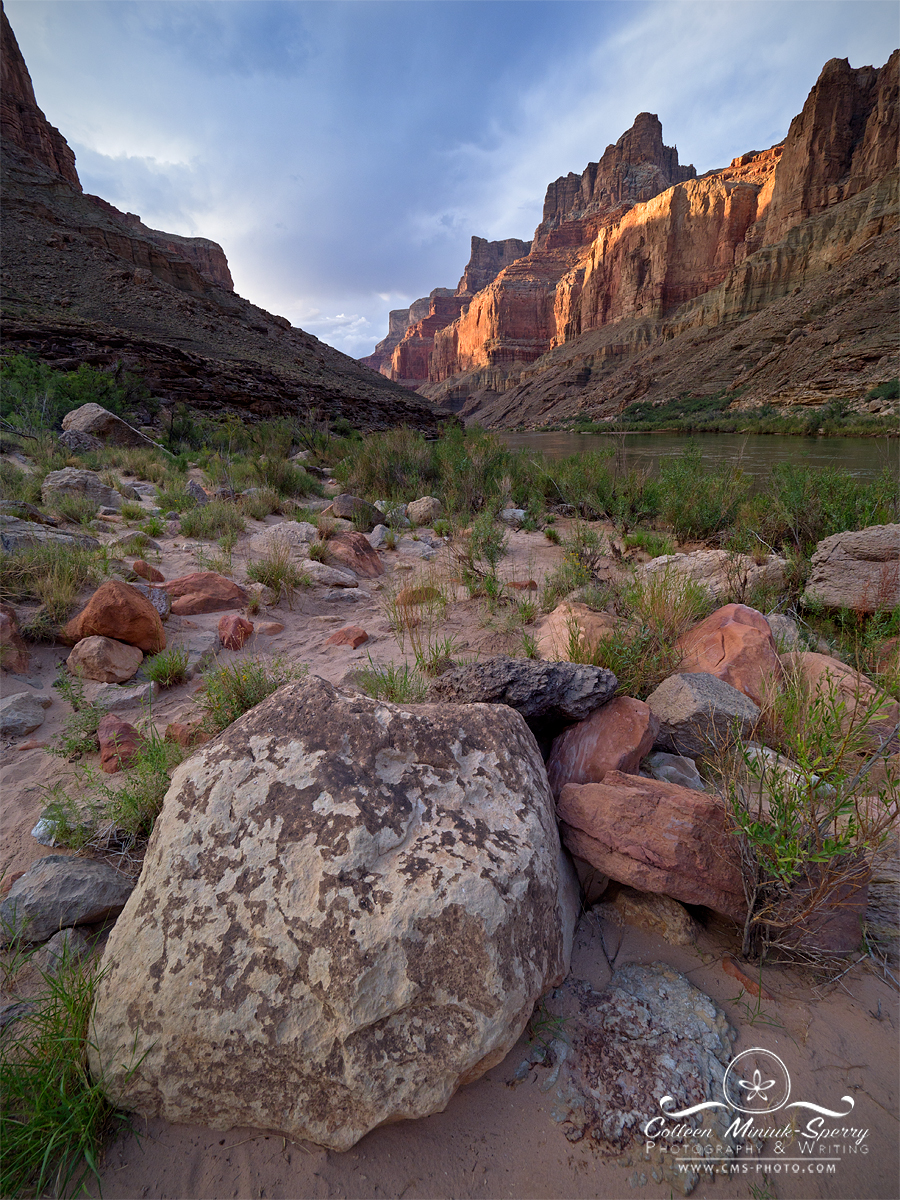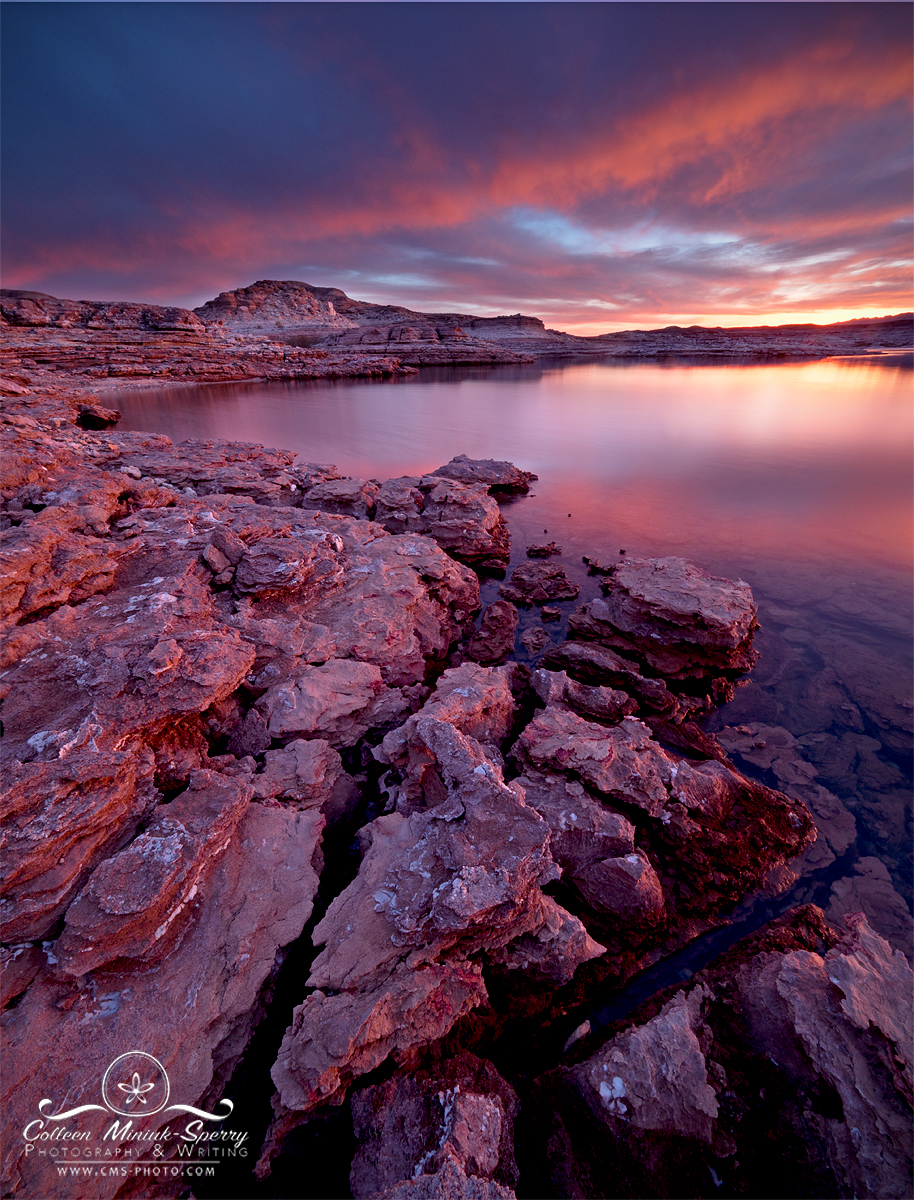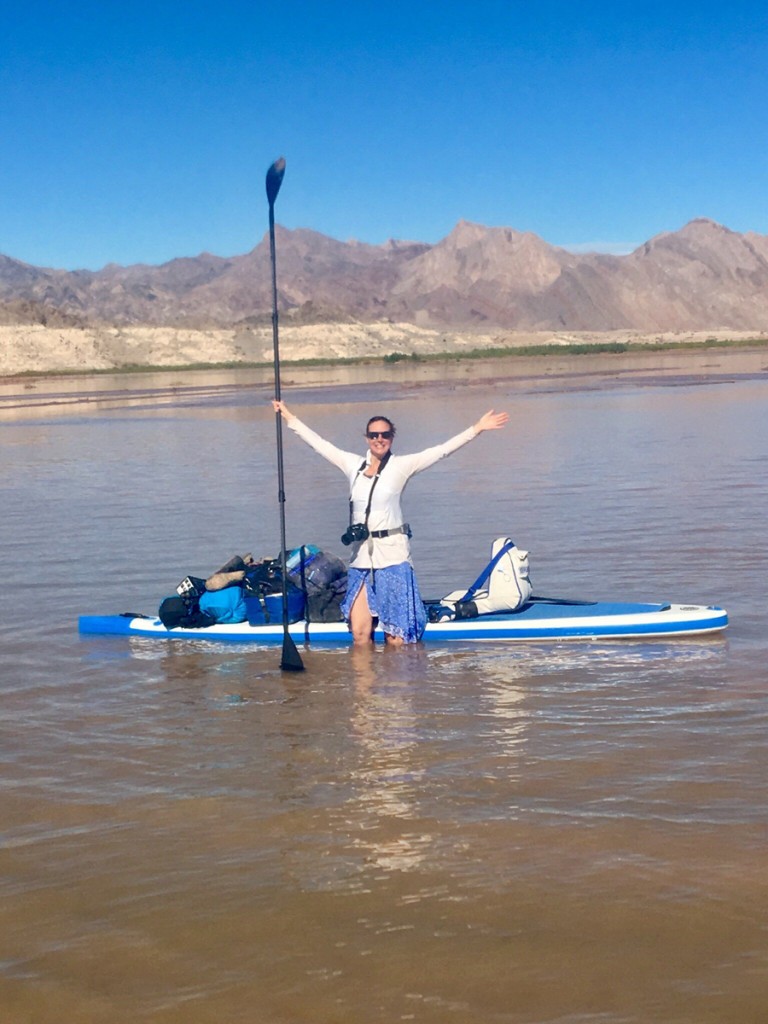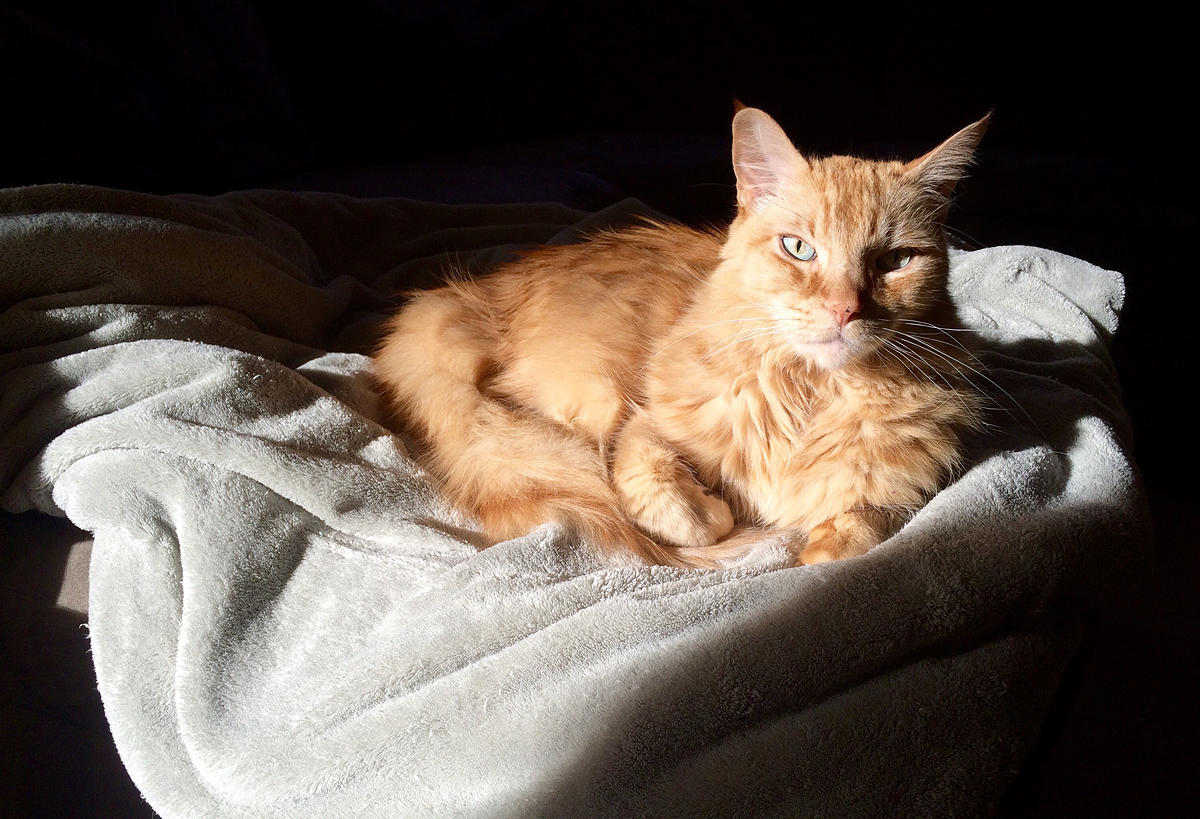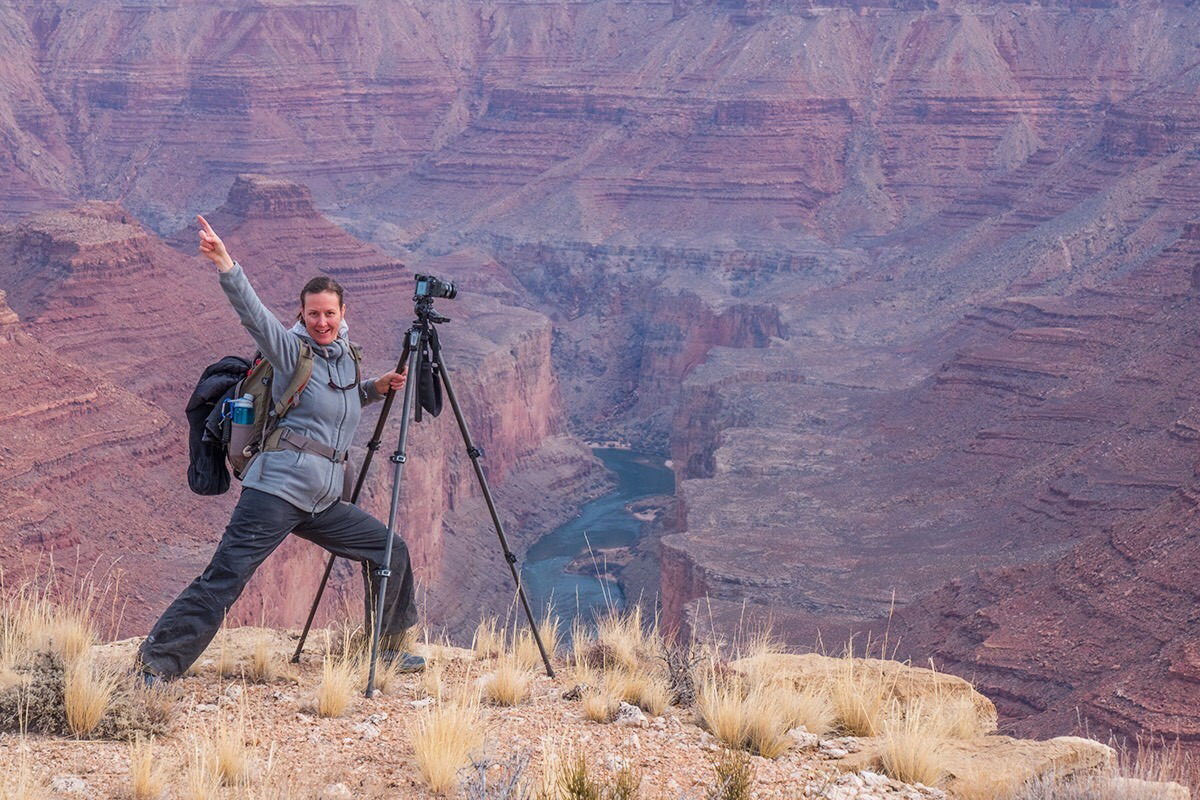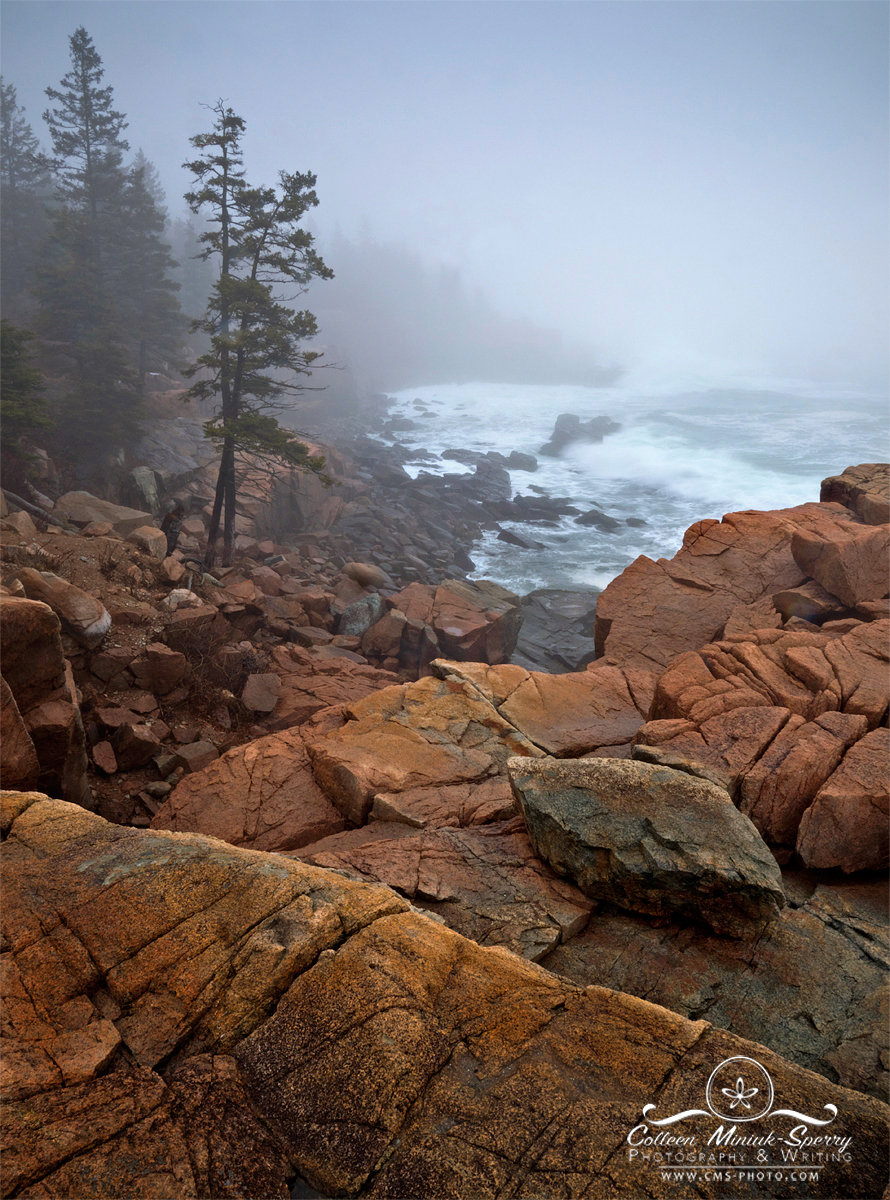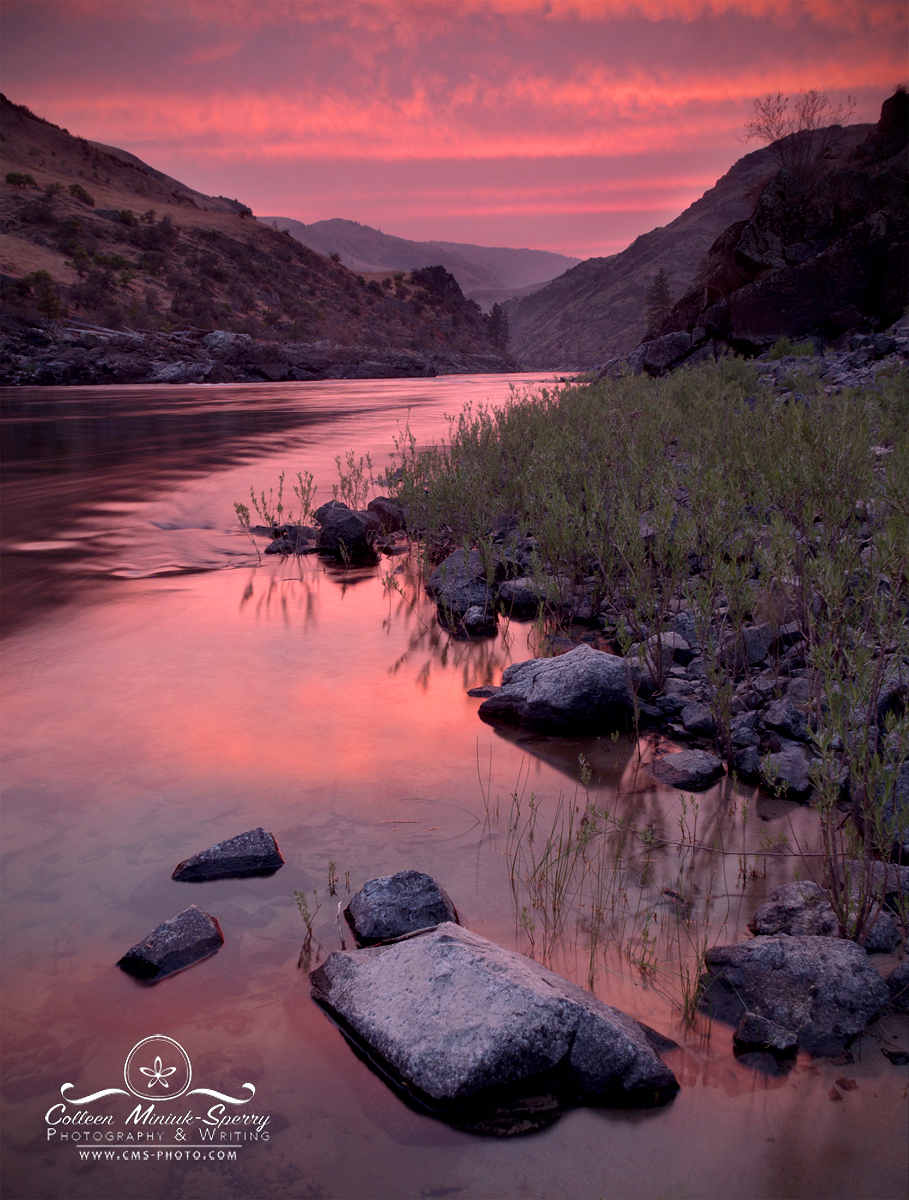
PHOTO CAPTION: “In the Pink,” from our Day 2 camp on the Lower Salmon River, ID while on the recent OARS “SUP Experience” river trip || Prints available! Click on photo to order yours.
“Do you see the line?” asked Liam, our guide and stand-up paddleboard (SUP) instructor.
Liam and I, along with my friend, Scott, stood on the basalt boulders high above Snowhole—the Lower Salmon River’s only class IV rapid—surveying the landscape. The sun poked through ominous clouds tinted yellow by the smoke of distant wildfires. The steep jagged cliffs of Snowhole Canyon constricted one of the last undammed, free-flowing rivers remaining in the United States into a fury of agitated water tumbling over and around house-sized rocks before disappearing around the bend. We couldn’t portage (carry our boards overland) around the rapid. We had to go through it. I stared into the froth looking for a path.
I saw not one, but two lines. The first, a pale green tongue on the far side of the river falling into a trail of white spray followed by a train of successive five-foot waves, each foaming at the mouth, each looking like it was hungry for paddlers. The second, the last line of a friend’s recent email offering well-intended advice flashing through my head, “…Snowhole—load your boards up in the raft for that one!”
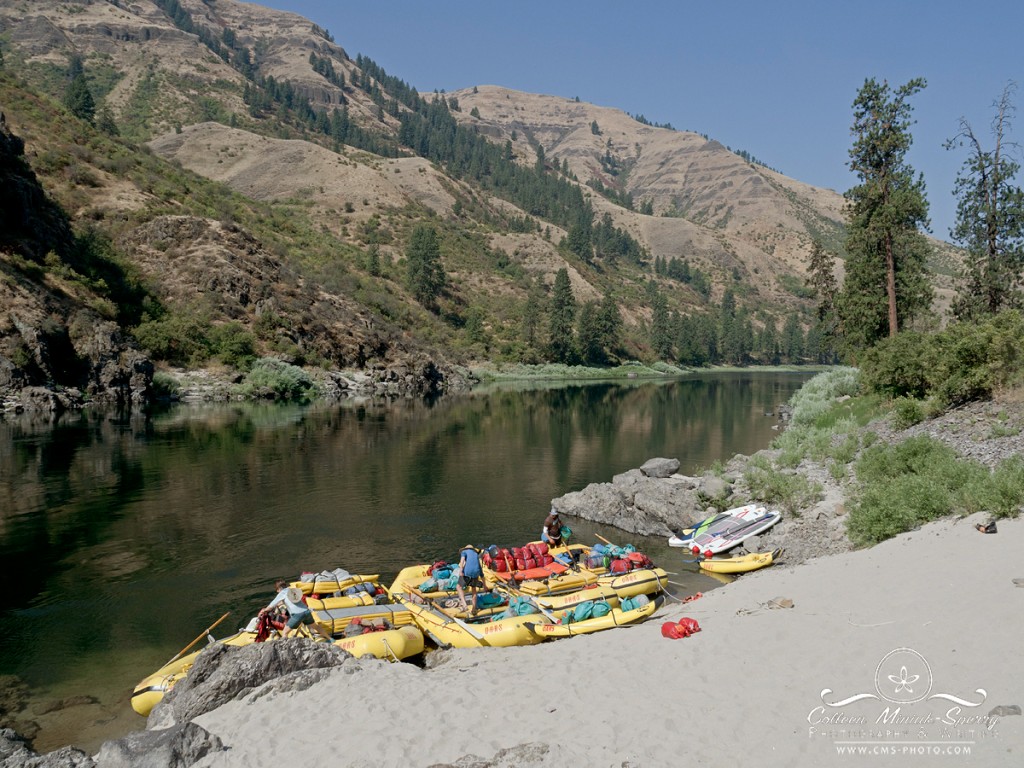
PHOTO CAPTION: At our put-in, Pine Bar. The stand-up paddleboards we borrowed are on the far right and behind the boats.
We were two days into a four-day “SUP Experience” with OARS, a company specializing in river rafting trips, where Scott and I were learning how to SUP through whitewater rapids on a 61-mile trip (from Pine Bar on the Lower Salmon River to Heller Bar on the Snake River). Since falling in love with paddleboarding in 2013, my previous SUP experience included exclusively flatwater, rivers and lakes. Except when feisty winds kicked up. (Lake Powell, I’m looking at you.) And that one time in April 2015 when I thought I was going for a nonchalant outing with a guide on the Colorado River in Moab, UT, to celebrate my 40th birthday and ended up running three class I-II rapids (and falling the last one). But all in all, I’d been on a board enough times to stop counting how many days. This was Scott’s 10th day on a board.
Thus far, on this trip, we had uneventfully but enthusiastically navigated the river’s class I and class II rapids, even a class III rapid called “Bodacious Bounce,” mostly while standing, sometimes while kneeling. A mere twenty minutes earlier, though, I had taken an involuntary swim in Half-and-Half, a class III rapid named as such because, according to our guides, “Half the time you make it, half the time you don’t.”
I had entered the first big drop on Half-and-Half standing up, but fell in the water when the third wave in dumped me sideways. I managed to get back on my SUP and started paddling again from my knees, but the river’s current pushed me toward a big hole the guides had suggested we try to avoid. I panicked. I rocked up the crest of the towering wave. It bullied the nose of my board backward. The hole sucked me in. I stopped paddling for some reason. I met the river face first.
Underwater, my board hit my helmet. At least I know which way is up, I thought. My arms flailed. I couldn’t find the surface. When I did, I gasped for air, then the current dragged me under again before I could finish inhaling.
I could hear Liam yelling, “Grab your board!” I couldn’t find it among the darkness and bubbles. I resurfaced.
“Grab my board!” I could see his board but couldn’t reach it. I went under again.
“Swim hard left!” Liam said. I spun my left arm while trying to keep myself afloat with my paddle clutched in my right hand.
Eddy out in front of that beach just ahead, I thought. Swim harder! Come on, swim harder!
“Swim hard right!” he said.
Swim hard right? But the beach is only five or six feet away, I thought. I should trust him. He could see the big picture. I couldn’t. I switched the paddle into my left hand and swam hard right.
The graveled shore disappeared. The current pushed me downstream toward a chiseled basalt wall to the left. “Turn your feet downriver!” Liam said.
I rolled over like an otter and smashed into a wave. And into another and another. A rugged rock jutted out of the cliff in front of me. I could get trapped here, I thought. I kicked as hard as I could against the boulder and spun backward into an eddy.
Liam stood on top of his board in the flatwater at the end of the wave train, bumping his fist on top of his helmet. At the start of the trip, the guides told us if we did not return this “all OK” signal, they would assume we had broken a femur, or worse. I pulled my hand out of the water and bumped the top of my helmet. All OK.
Scott pushed my board, which he had rescued mid-rapid, in front of me. I mounted my SUP and coughed uncontrollably. I had made it down Half-and-Half, and I had learned my lesson. Don’t ever enter a rapid timidly. And don’t ever stop paddling.
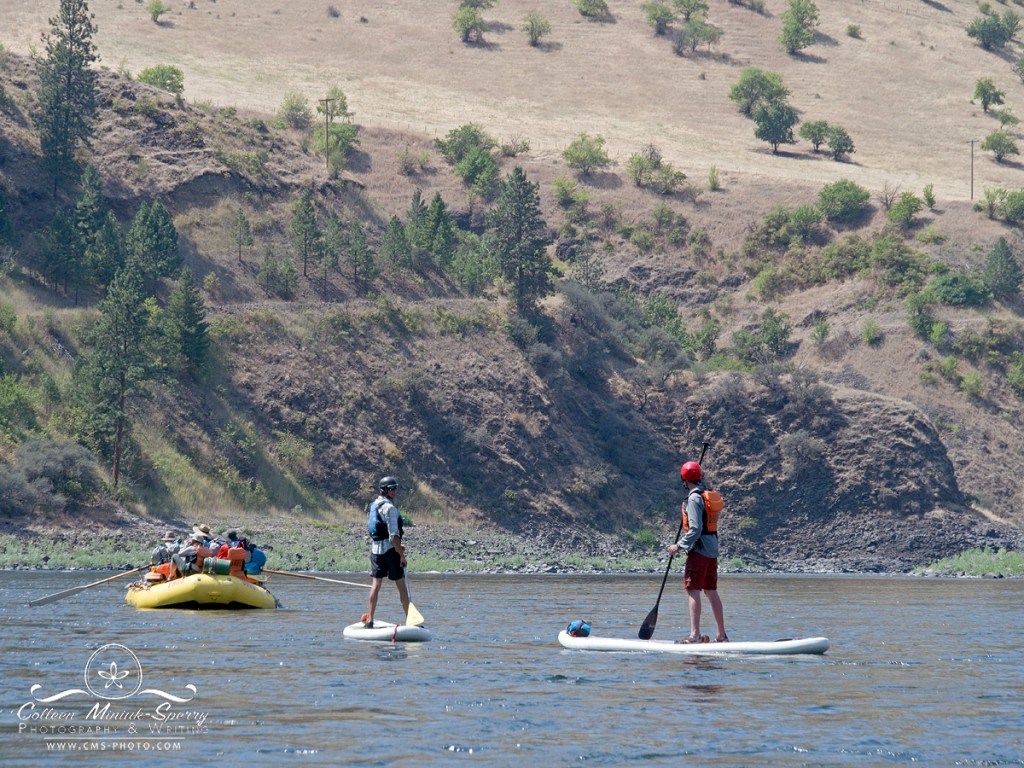
PHOTO CAPTION: Our guide and instructor, Liam (middle), and Scott (right) converse on a stretch of flatwater on the Lower Salmon River, ID
Now, at river mile 23.4, I pointed at Snowhole, tentatively tracing the air with my finger. “I think I see the line,” I said to Liam and Scott.
“On this one, you gotta hit the line perfect,” Liam said. “Start a little right, and build up momentum as you go straight down the tongue. Then paddle hard left to miss the rock. The next waves are HUGE and you’re gonna hit them hard, so hit the deck [drop to your knees on the board] if you haven’t already, and keep paddling through them. Whatever you do, don’t stop paddling.”
As we scouted the river’s drop, three private rafts ran Snowhole. Each took a slightly different line—left of the tongue, right of the tongue, and straight down the middle. Each tipped precariously onto its side when approaching the pyramid-shaped rock, then recovered, and disappeared over the long drop, then reappeared, and bucked wildly through the splashy wave train. Each stayed upright.
“What if I run into that rock?” I asked
“I’ve tried running a raft straight into that rock,” Liam said, “Can’t do it. The current pushes you away from it, pushes you left, whether you like it or not.”
“What if I paddle too hard to the left?”
“You don’t want to do that. You’ll end up behind that next rock and hit a massive hole. Yeah… don’t do that.”
“What happens if I don’t hit the line perfectly?”
“You’ll go for a swim. But it’s way shorter than Half-and-Half,” Liam smiled.
“Is there another rapid after this like there was after Half-and-Half?”
“No, it’s just flatwater. We’ll have plenty of time to get you.”
How comforting, I thought.
“I’m gonna do it,” Scott said without any hesitation. “Are you gonna to do it?”
“I don’t think so,” I put my hands on my hips. Half-and-Half had exhausted and humbled me. I was cold, and I didn’t feel like swimming through another rapid. I had an easy out: I could hitch a ride through it on one of our group’s rafts.“I just don’t think it’s worth it.”
“I think you got this,” Liam grinned. “And you’ll be totally stoked when you get through it.”
He said “when” not “if.” Semantics are important to writers just as clients surviving is important to guides.
“When do I need to decide?” I asked.
“Let’s grab lunch first,” Liam said.
While we ate chicken curry salad wraps, we watched several more rafts stay upright through a short harrowing run. I visualized the run over and over. Start right, paddle hard left, but not too hard, then keep paddling. Seemed simple enough.
Ladybugs clung to my white shirt. A good omen, I thought. Maybe I could do this. After all, I didn’t come here to sit on a boat. I came here to learn how to paddleboard rapids.
Another half-hour passed. No one asked me again whether I intended to run the rapid on my paddleboard. And I’m not sure I ever came to a formal decision. When lunch concluded, everyone in the group returned to their respective vessels. I got back on my board.
“You ready?” Liam asked while bending his knees on his SUP. I didn’t respond. It didn’t matter if I was ready or not, this was happening. I gave myself a short pep talk. You got this. It’s just water. Hit the line perfectly. Keep paddling.
As we crossed the river to position ourselves to start a little to the right, Liam looked back at Scott and me, and said with a smirk, “We’re gonna kill this.”
Liam disappeared into the waves. I dropped to my knees. The silky smooth tongue pulled me into a curled wave. Paddle. Then another, a bigger one. Paddle. Then another over my head. Paddle. Paddle. Rock on the right. Paddle, paddle, paddle! Hole on the left. Paddlepaddlepaddlepaddlepaddle!
I plunged over a ledge and came face-to-face with the biggest wave I’ve ever seen on a SUP. I stabbed my paddle into it, jabbing at it as if I were slaying a mythical beast with a sword. I kept swinging, wave after wave, until the rapid fizzled out.
I pulled into the eddy where Liam and two of our OARS rafts waited. I looked back at the rapid. Scott was in the water, clinging to the side of his board. He bumped his fist on top of his helmet and joined us in the eddy. I turned to Liam. He pumped his fist in the air victoriously. “That was sick!”
I raised my paddle over my head and yelled, “Whoohoo!”
I had spent almost an hour paralyzed by fear, and in less than 30 seconds, it was over. I don’t know if I hit the line perfectly or not, but I had just stayed on top of my paddleboard through Snowhole. Liam was right. I was totally stoked.
Downstream, I faced another wave, but this time in the river of life. When we returned to civilization two days later at the conclusion of our trip, I received a text from my parents indicating my 16 and a half year old cat had taken a turn for the worse. Cancer. It had eaten through his left jawbone which had erupted into an abscess in his mouth. The doctor confirmed there was nothing I could do to save him or provide a quality life. Although I never thought I could bring myself to euthanize a pet, I made the difficult choice to end Nolan’s suffering. He flatlined in my arms listening to “Sunrise” by Norah Jones, his favorite song, and with me looking into his eyes repeating with a smile, “Mama loves you. Thank you for sharing this life with me.”
When I read the line, “Learn the basics of stand-up paddleboarding, reading whitewater, & river safety” in the OARS description on their website prior to our trip, I never imagined we would face a class IV rapid, let alone run it on a SUP. In doing so, though, I learned that when a river—whether “The River of No Return” (as early explorers called the Salmon) or the river of life—drops you to your knees, don’t ever enter a rapid tentatively. And don’t ever stop paddling.
—————————————————
Authors Note: My GoPro died after being submerged in Half-in-Half with me so I sadly have no footage of our run through Snowhole. Should you wish to see an example of what the rapid looks like, though, these two Youtube videos (taken by by people not on our trip) will give you a pretty good idea of the conditions: https://youtu.be/2-e8kakcf94 and https://youtu.be/tS1piA2yvTc. If you’d like to see what it’s like to SUP on a class II rapid on the Lower Salmon River, visit http://youcansleepwhenyouredead.com/wordpress/suping-on-packers-creek-rapids. Packers Creek Rapid was our warm-up on the morning we ran Half-and-Half and Snowhole, so my Go Pro was working then…
The Outdoor Writers Association of America awarded this blog First Place in the “Outdoor Fun & Adventure” category in the 2019 Excellence in Craft awards.
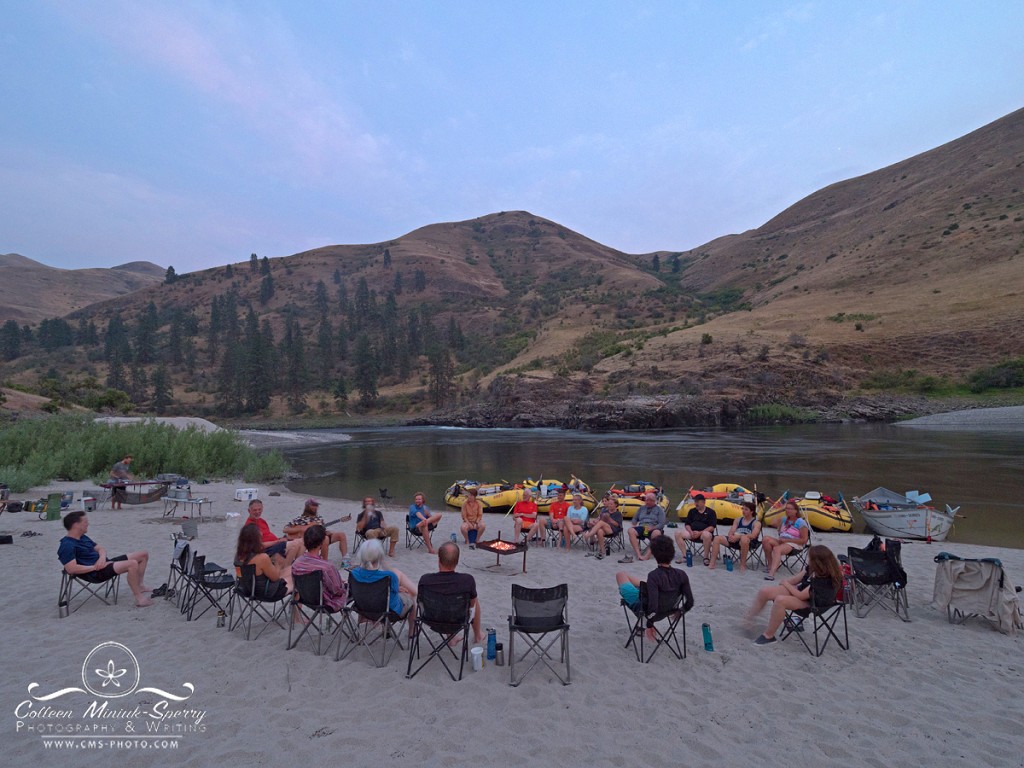
PHOTO CAPTION: One of our guides, Sean, serenades us in camp after sunset on Day 2 of our river trip with OARS on the Lower Salmon River, ID.

